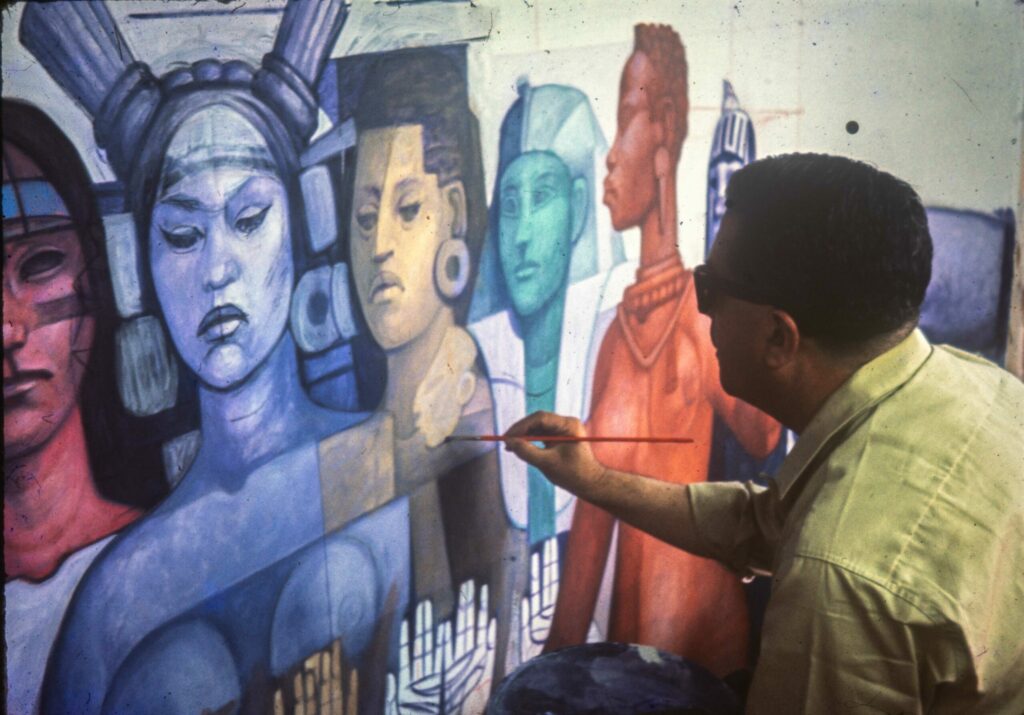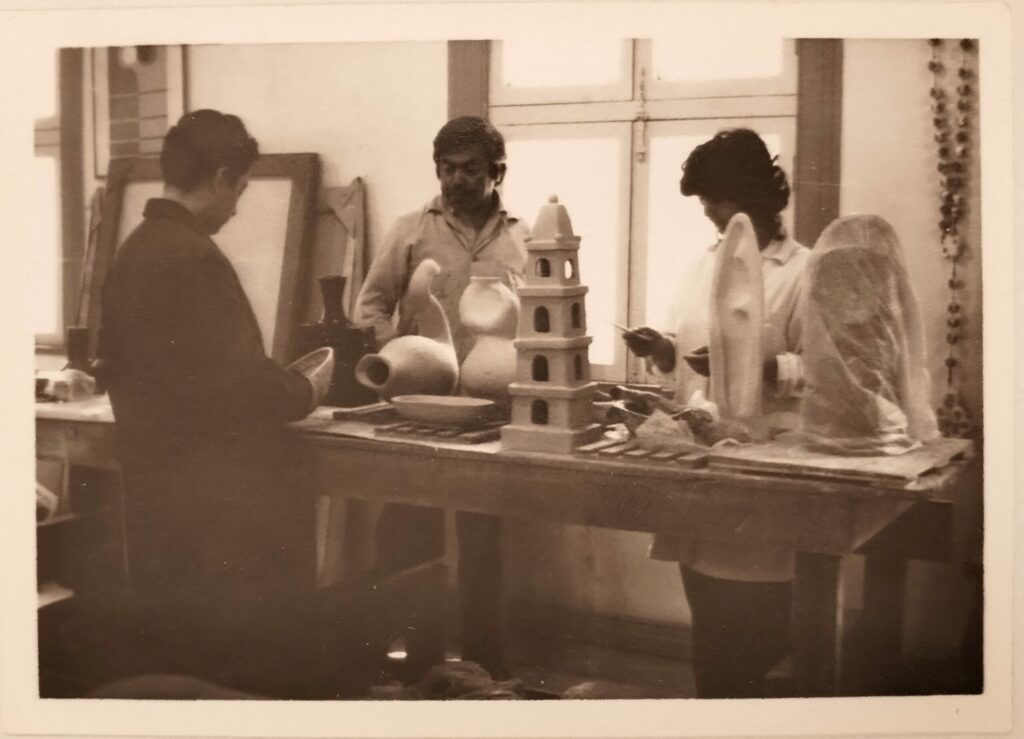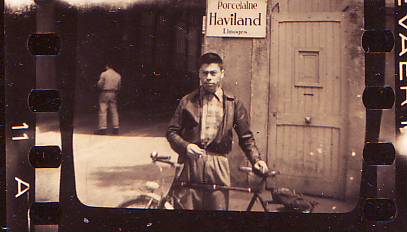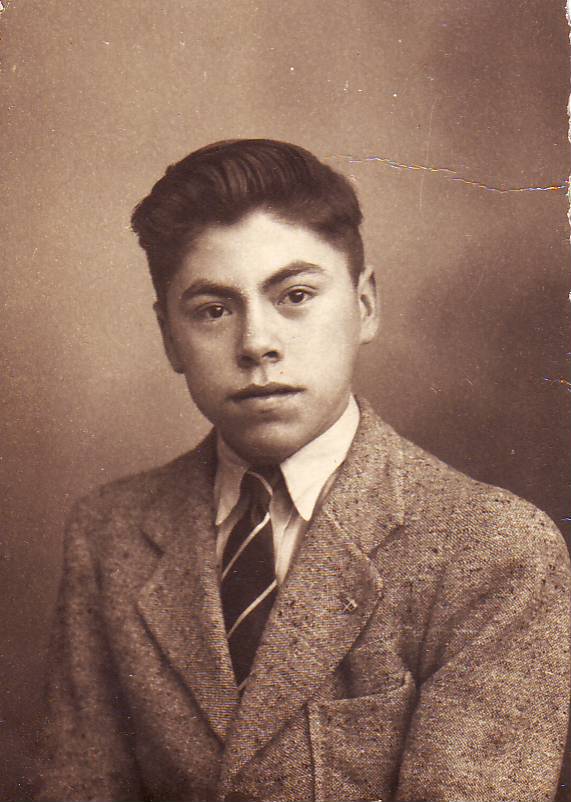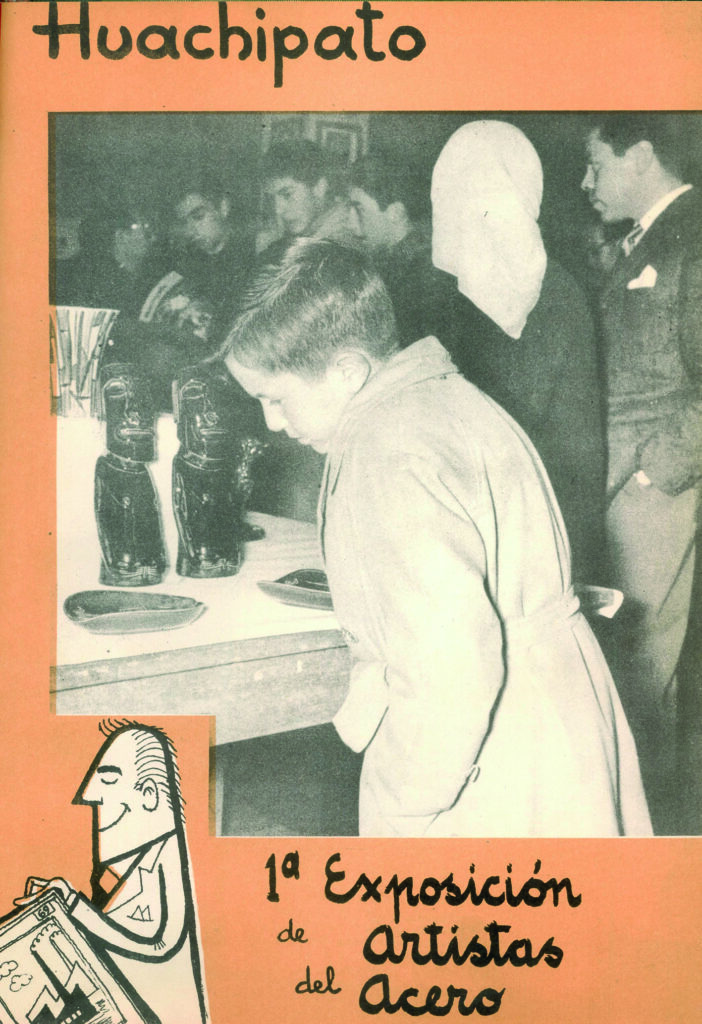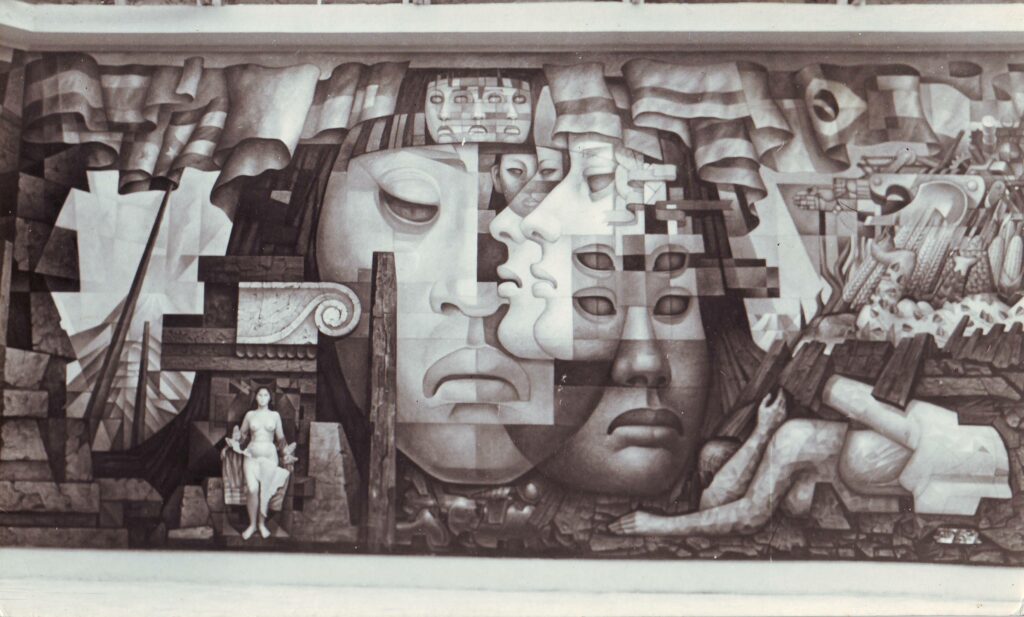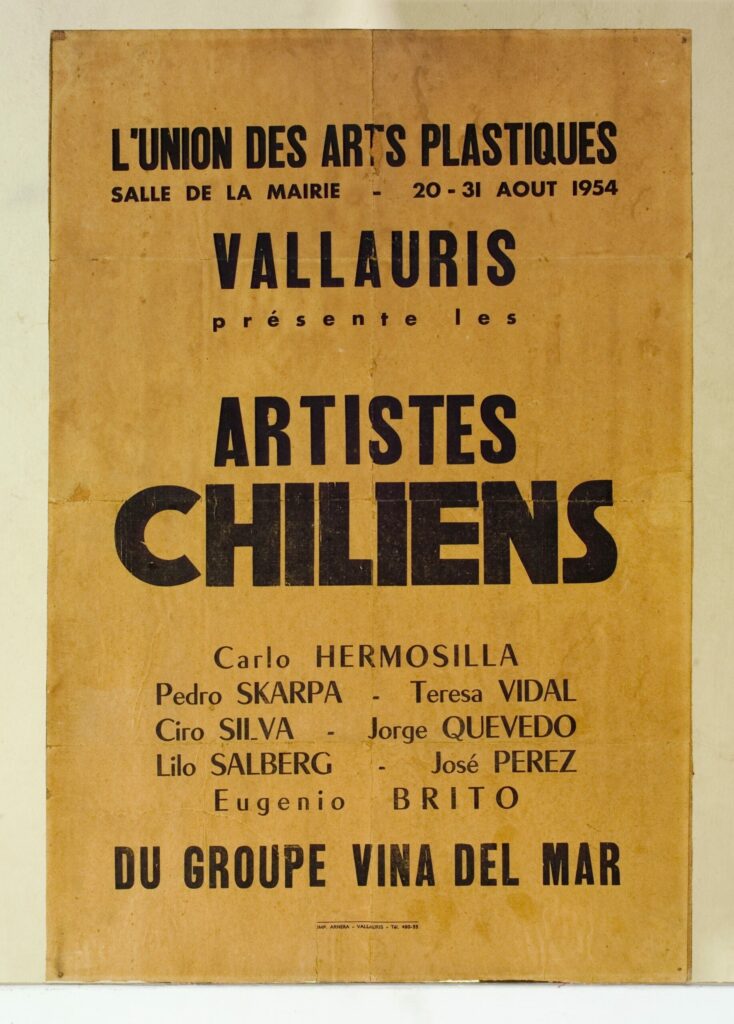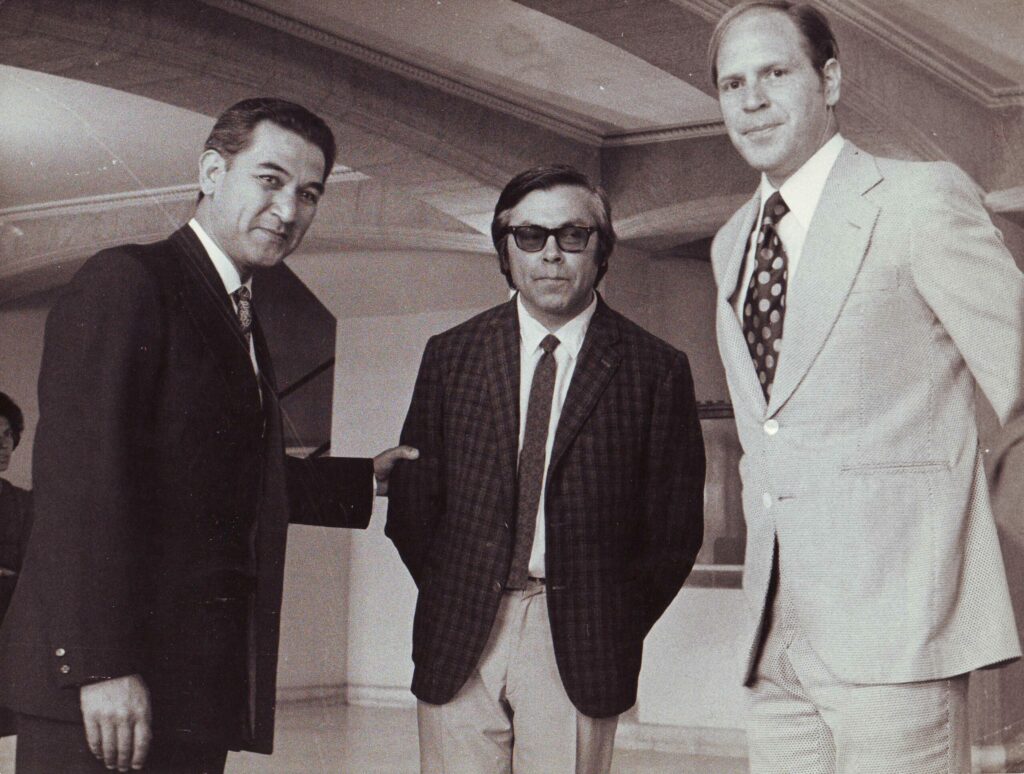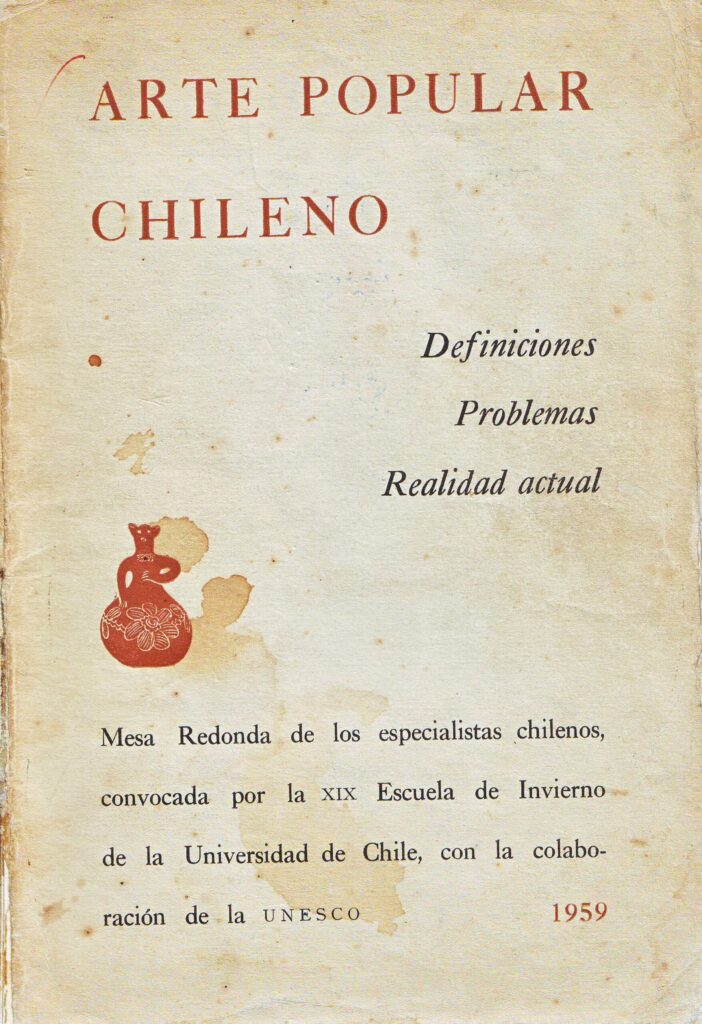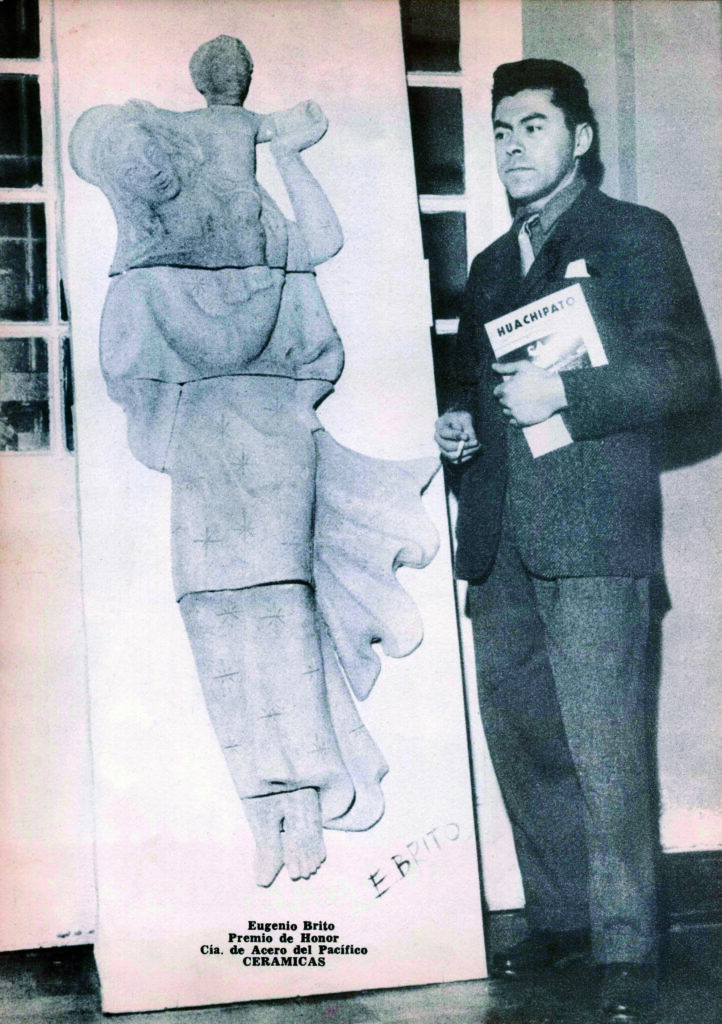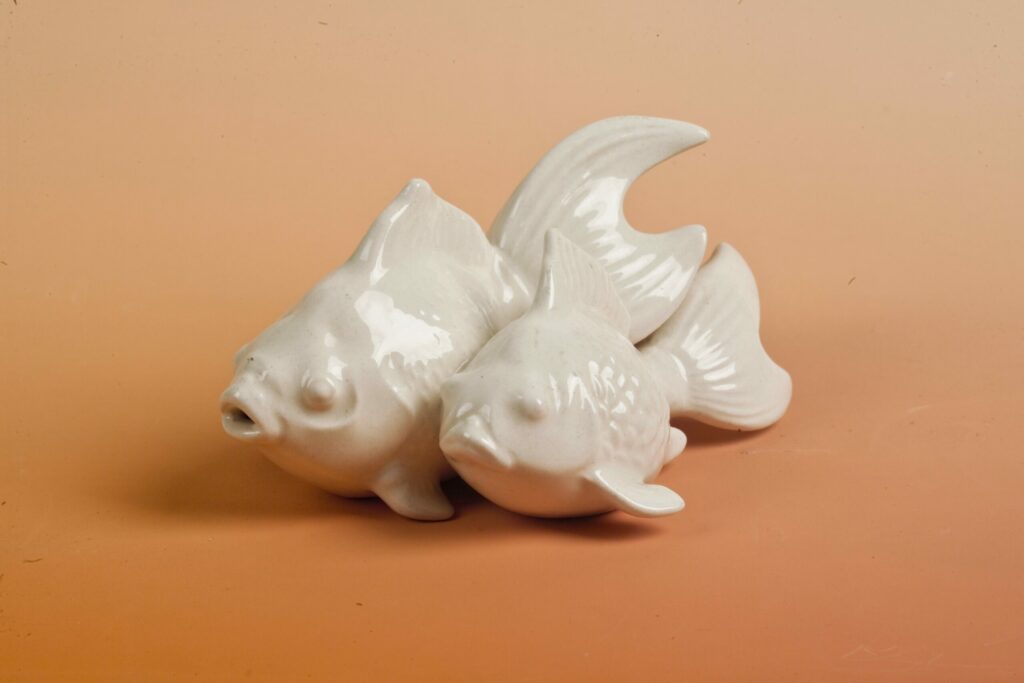There are five murals by Eugenio Brito in Concepción: “Towards the Light of Knowledge,” “Las Tres Pascualas,” “Simón Bolvar,” and those of the Church of Rere and for the Kindergarten of the German School. Everything is well-known and significant. They differ in techniques and conception since they are based on diverse subjects. There is no impact of González Camarena or the Mexican in them, an influence that is evident in his easel work, particularly the work he produced with the author of the mural in the House of Art. But he quickly manages to liberate himself, his paintings taking on the traits for which he was recognized.
The Simón Bolívar mural is perhaps the first of those made by the artist in the Concepción area. Made with the mosaic technique, it occupies the wall in front of the entrance door of the hall of the former Radio Simón Bolívar, where today the Gendarmerie offices operate. It is difficult to see because furniture covers it, but apparently it has not suffered damage. The tiles of this mural encompass large planes of color that are harmoniously distributed with soft modeling. In the center and standing, you can see the hero Simón Bolívar in his military attire, his left hand resting on the pommel of his sword, and his right hand holding the bridle of his white horse. On the sides, you can see colored areas bordered by spears, pennants, and horse heads that blend into the dominant color as well as soldiers who appear to be floating or wrapped in ribbons.
The Rere Church Mural, on the other hand, is more similar to an easel painting than a mural. Plastic solutions are simpler. It was created behind the church in the rural town of Rere, above the altar, in a triangle style that stretched the entire width of the structure. It tells the town’s history in two sequences split by a window, the one on the left focusing on the past and the one on the right on the present. The nearly spherical window divides the spaces into equal sections. Acrylic was used on chipboard boards. The author painted sheaves of wheat above the window frame, from which a hand emerges carrying wheat spikes.
The mural ‘Towards the Light of Knowledge’ was made on chipboard plates using the acrylate process. It has a surface area of fifteen square meters and was originally intended to occupy one of the library walls at the “Federico Santa Mara” Technical University’s King Balduino Campus in Talcahuano, where it was displayed for several years before being transported to the campus’s entry hall and hung in height before being fastened to one of the hall’s walls. It was designed for a library and displays the book as the main character, representing humanity’s past. There is more complexity in the content and formality, with the author blending collage, for example, alongside painting, which strengthens it but also makes it more vulnerable to damage. This is not a minor detail because the major figures in this global history are re-created in paper figurines pasted to the picture, which today appears to be quite damaged, partly with parts of detached material. White spots occur at the joints of the three hardwood plates, indicating that the work is failing in general. This oversight is aggravated by the fact that a screw was used without care to hide it to properly connect it to the wall where it was subsequently put.
“The Three Pascualas” is possibly Eugenio Brito’s most interesting and complicated mural in the area, with its attenuated coloring and immersion in blues and grayish ochres, where the figures stand out with their net volumes on the plane and give the piece a significant presence. It is a lovely ceramic space of eighteen square meters set on the back wall of the inside stairway leading to the second floor in Concepción’s university shopping corridor. It depicts a well-known local legend about three women who, according to folklore, drowned for love in the lagoon that bears their names.
It projects on these three elongated planes, blue on the sides and in the middle, with ocher and reddish subtleties, and is entirely diagrammed with flat geometric forms constructed using the mosaic technique. The upper section is made up of a number of geometric planes, rectangles, and squares of varying sizes with inscribed triangles, the largest of which is white and is united to the others at the top by a circular figure that depicts the moon breaking the planes and straight lines. The three figures that comprise the mural’s theme are positioned in emphasized relief on the three rectangular planes in the center. Its elongated curves evoke a tremendous dimension. Each one is made of pottery and is made up of many parts that have been combined and colored with blue and ocher glazes. Six birds in flight, also in relief and using colors that are very similar to those in the figures, enhance the effect of the modeling by dynamizing the white plane that crosses the wall and giving the figures the appearance of ascending in the gray air.
The mosaic technique was used to create its twelve square meters. It includes figures or elements that usually animate the children’s world, made in simple, flat designs that are very fresh and visually rich: images of long stems with flowers and leaves of rigorous geometry, rigid soldiers from palitroques games, stylized butterflies with cheerful and suggestive colors, and ants and houses that simulate castles. The figurines protrude from the plane, enriching the mural’s surface. This has stayed placed on the ground in the new building that now houses the German School in the commune of San Pedro de la Paz, attaining greater proximity to the observer.
Albino Echeverria is a painter, educator, and restorer who has been associated with the University of Concepción’s Department of Plastic Arts and the Pinacoteca for many years
